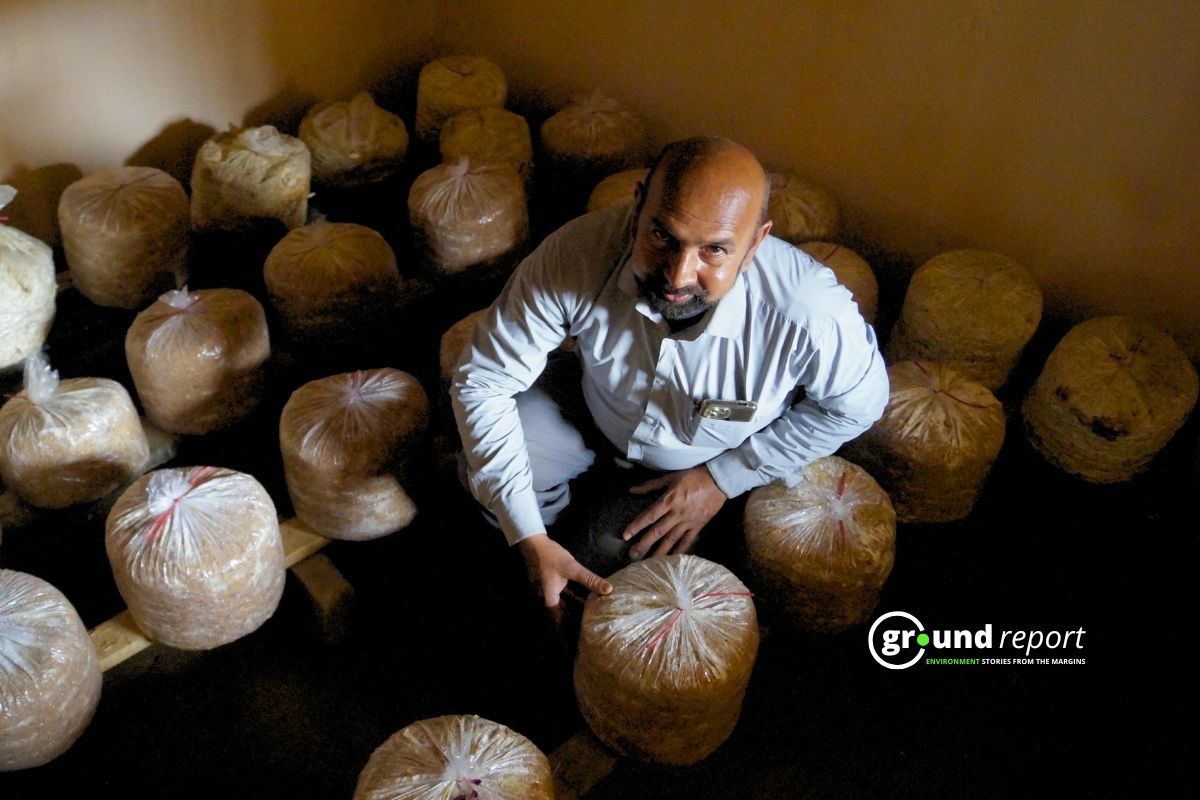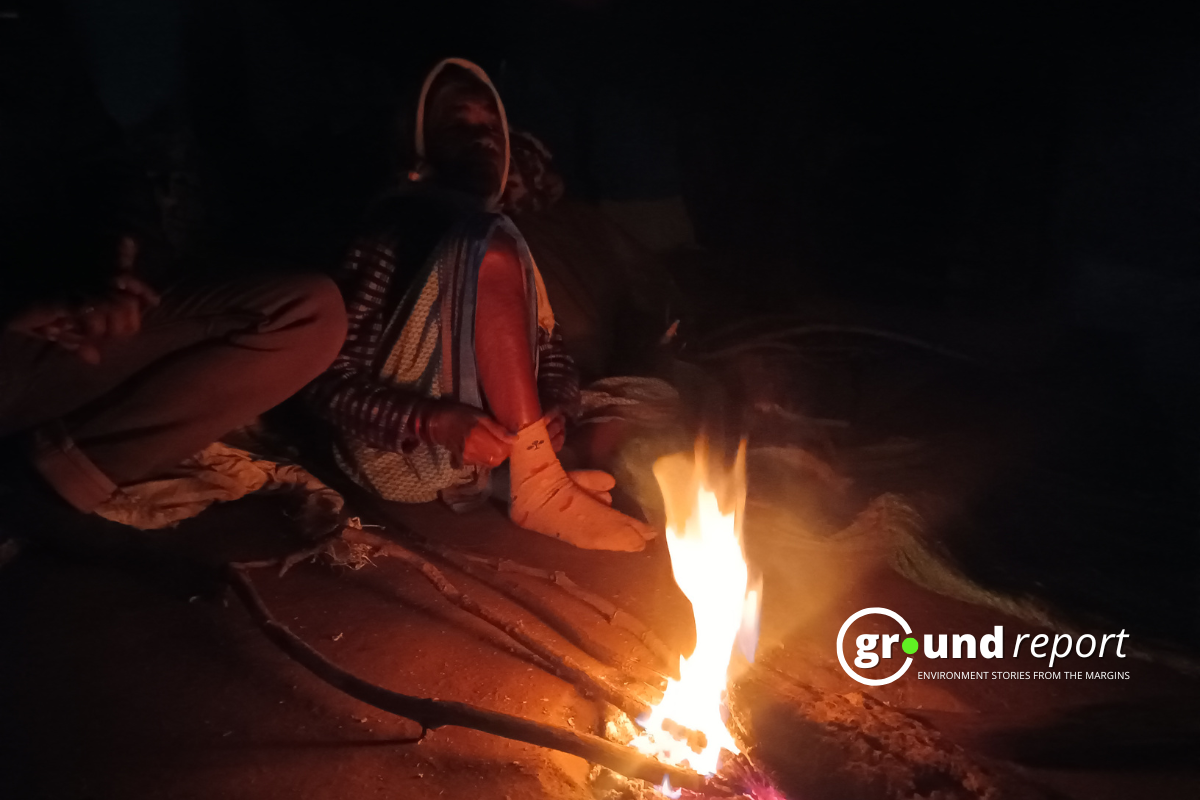Bashir, a pashmina shawl seller in Polo View market, Srinagar has been closely witnessing the developmental process of the city. After surviving several relentless days of extreme weather in Kashmir, Bashir Ahmad Shah’s frustration reached its peak.
“Copying and pasting models from European countries and expecting them to work in Kashmir is perhaps the gravest mistake we’ve made in our developmental projects,” he said.
With each passing day of incessant rain, Bashir’s concerns deepen. The intensity of the downpour led to a failure of the drainage system around ‘Smart City’, Srinagar. As Bashir mopped his shop floor, his frustration boiled over. “It’s not the first time, he lamented, “after every downpour, we find ourselves battling floodwaters– only to realise that the drainage system has failed us once again. The water poses a grave threat to the items in the shop.
Poloview is a bustling street in the heart of Lal Chowk, Srinagar. Renowned for its wide array of traditional Kashmiri handicrafts, Pashmina shawls, handwoven carpets, wooden carvings, papier-mâché artefacts, clothing and accessories to authentic spices and dry fruits. Continuous water logging in streets has made tourism difficult and has left business owners worried.
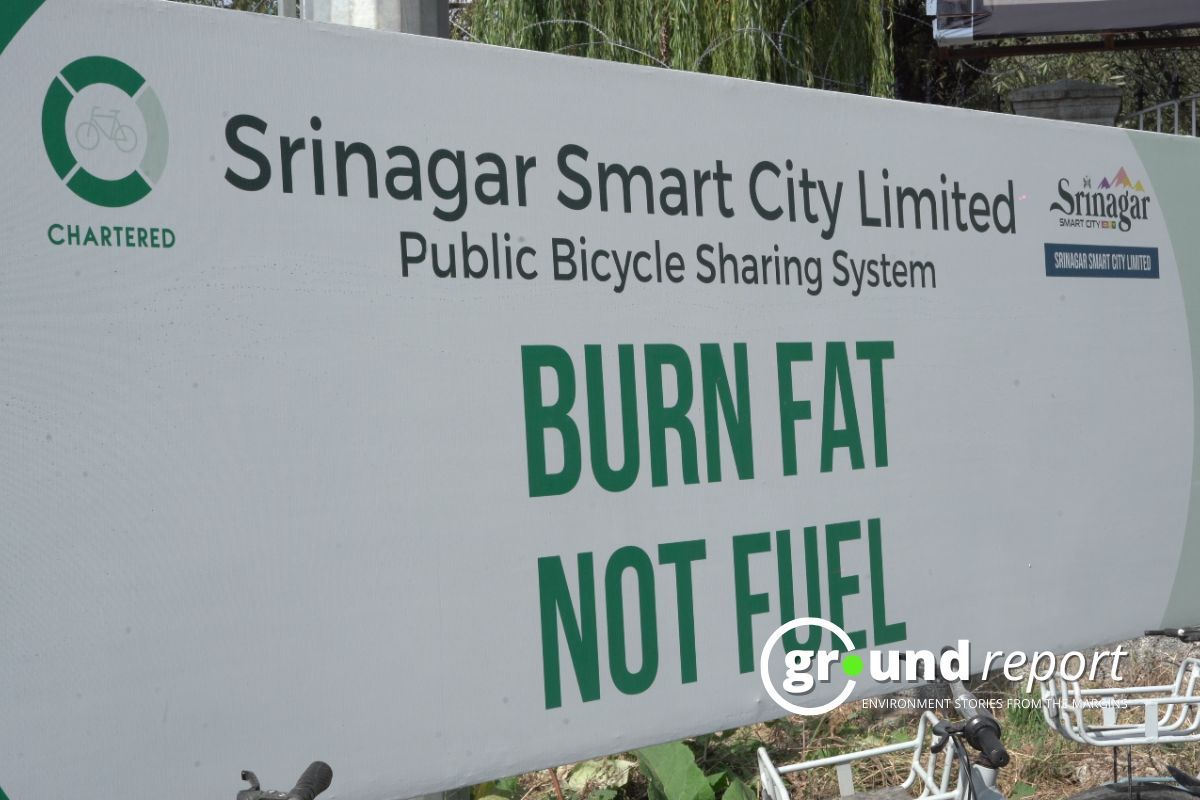
Waterlogging amid Smart City construction raises questions. Poloview isn’t the only area in Smart City Srinagar grappling with the effects of water logging. Numerous regions, including the well-known foreshore road stretching from Dalgate to Dargah, have experienced significant water logging, with the Nishat area particularly choked with water.
An official from the Flood and Control and Irrigation Department told Ground Report on grounds of anonymity that it is important to remember that drainage systems and flood channels serve different purposes. Flooding usually involves rivers or lakes breaching their banks, while water accumulation on roads is typically a drainage issue and has nothing to do with floods. “These are distinct problems, and we’re working to address them separately.”
“Water logging in a smart city isn’t necessarily linked to flooding. The Jhelum River didn’t breach its banks. Rather, continuous heavy rainfall overwhelmed our drainage system and led to waterlogging in different parts of the city,” he said.
Residents often worry that water logging in the city might be a precursor to floods that give room to unnecessary panics.
Under construction, not-so-Smart City
In 2022, the administration announced a 980 crore investment in a comprehensive Smart City makeover that promised a transformation of Srinagar within six months. The plan included new cycling tracks, pedestrian-friendly pathways, and streamlined traffic systems that aimed to give the city a modern, efficient, and appealing look.
Residents criticise the Smart City Srinagar initiative, saying the project focused on road beautification, and the drainage infrastructure was neglected. One resident said, “How is it a smart city when it does not have a proper drainage system?” The newly constructed roads under the Smart City project along the foreshore area were being dug out to redirect water toward Dal Lake. This was an attempt to alleviate the waterlogging problem.
As per Imran Matto– a resident of Dargah, “The smart buses that were introduced by the administration a few months ago are already falling apart because our roads are a mess. Honestly, I don’t know what this city has come to,”
Dug-up roads in various parts of Srinagar, including Dalgate, Khayam, Khanyar, and extending to many areas in downtown Srinagar, as well as Karanagar, Batamallo, and Bemina, have created a major problem with potholes. Heavy rains make the situation worse, causing workers to leave the roads in a poor state, leading to waterlogging and traffic jams across the city.

Dr Raja Muzzafer, an environmental activist said that shrinking the roads all over Srinagar is making it harder for vehicles to move around. “Unfortunately, the drainage system in Kashmir isn’t good and all the sewage from Srinagar ends up in the Jhelum River. The Smart City project should have focused on fixing these problems instead of just making things look nice.”
“During the G20 delegation visit in May 2023, the Batamallo to Gulmarg road was supposed to be widened for the delegation to pass. It was planned to be beautified with tiles, and the entire stretch was put under construction. However, due to security reasons, the delegation’s Gulmarg trip was canceled and so was the work on the stretch. It has been almost a year now, and the work is still moving at a snail’s pace,” said Saiqa Masoodi, a local from Bemina, Srinagar.
Owais Ahmad, CEO of Smart City, while talking to the Groundreport said that
“Several projects are still underway in Srinagar city, and we are actively addressing them. Regarding waterlogging, we are implementing measures to mitigate its impact. We have broken some under-construction drains at certain locations to facilitate the removal of stagnant water from the roads. The whole of Srinagar City is under construction and projects are yet to be completed at many places.’’
On the questions of delay in project completion, Owais Ahmad, responded after a moment of silence “We’re on it, doing our work.” But, he reassured that efforts were ongoing to move things along.
Fear of Flood among people due to torrential weather
In 1893, Kashmir was ruled by the Dogra Regime when a severe flood inundated the whole valley. This led to the construction of a flood spill channel in 1902 to prevent future flood disasters. The flood channel was built so that it could hold the high-capacity water, stretching almost 48 kilometers along the peripheries of the valley before joining the Jhelum River. Eventually, merging into the mighty Wular Lake.
However, as per media reports, the channel has deteriorated over time due to administration neglect over its projects, high silt buildup and the accumulation of garbage in the river bodies. In 1992, another major flood struck Kashmir and the loopholes that were earlier neglected became evident. Again 2014, when the entire region was flooded again, it clearly showed the failure of disaster management.
The carrying capacity of Jhelum’s flood channel had decreased from 65,000 cusecs in 1992 to just 25,000 cusecs by 2014 far below the carrying capacity of the channel to manage the flood waters. The administration failed to maintain the channel’s capacity, which led to severe consequences.
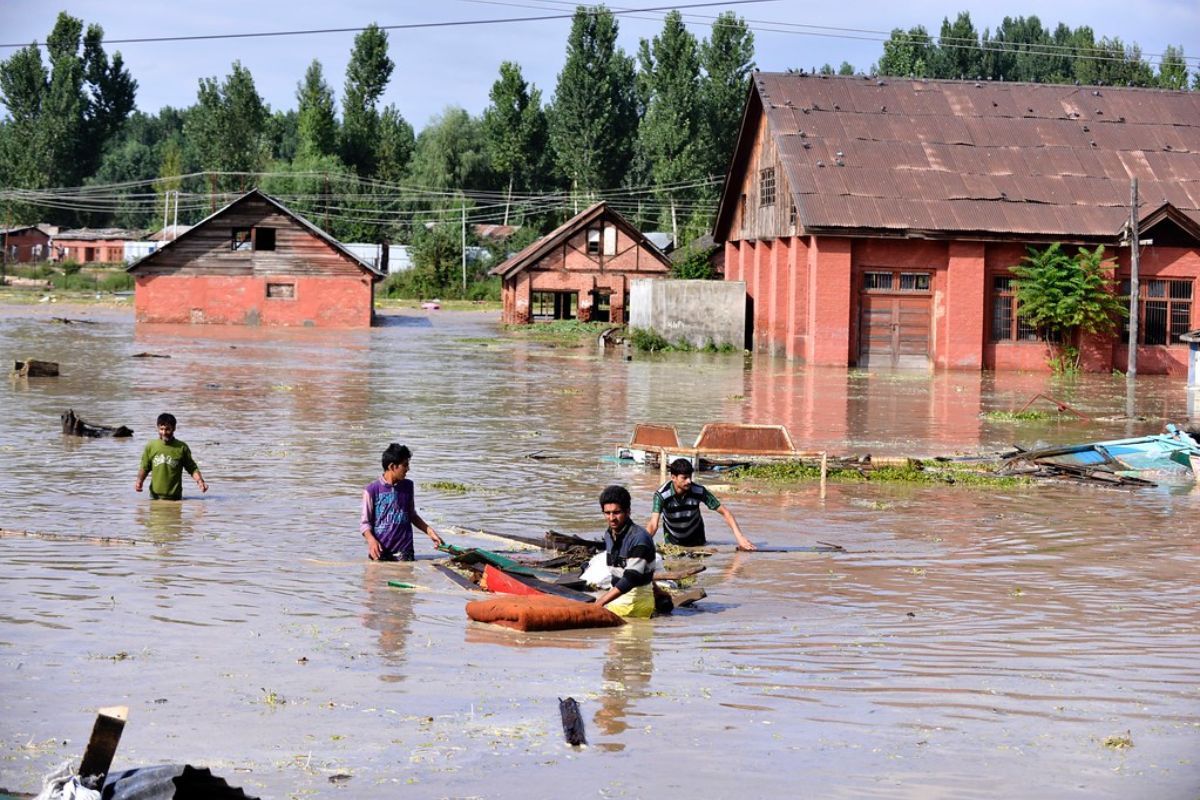
The 2014 floods brought 1,15,000 cusecs of water exceeding the channel’s capacity to carry the flood waters. Hence, almost 70 per cent of Srinagar was inundated. The administration faced significant backlash for not maintaining the flood channels and the disaster management system was condemned for its grave mistake.
Recently, Flood alerts were issued by the Irrigation and Flood Control Department, and concerns are being raised about the capacity of the flood channel. Engineer Shuja, a technical officer from the Flood and Irrigation Department said to Groundreport, “The carrying capacity of the flood channel in Jhelum is 33,000 cusecs.” This represents a modest improvement from the 25,000 cusecs recorded in 2014. But, it is still far below the 115,000 cusecs of floodwater that inundated 70% of the city a decade ago. And, with ongoing intermittent rains, the fear of floods keeps looming.
The official in the mentioned department stated that
“In Kashmir, floods are managed through the Jhelum Flood channel that carries water from South Kashmir through North Kashmir and eventually flows to Pakistan via Uri. The rainwater from all the connecting tributaries flows in river Jhelum. The current water carrying capacity of the Jhelum Flood Channel is approximately 33,000 cusecs with a stretchable limit of 40,000 cusecs which can manage floods safely.”
As elections are in vogue, political parties in Kashmir are seen seizing every opportunity to criticise the administration. Former Jammu and Kashmir Chief Minister Omar Abdullah has spoken out.
“It looks like the authorities slept after the 2014 floods with the feeling that the water will not rise anymore here,” he said. He urged the authorities to adjust their thinking in response to these changing patterns and stressed that thorough planning and long-term solutions are necessary to prevent future disasters.
A warning to prevent future floods
The National Institute of Disaster Management (NIDM) published a comprehensive report on the 2014 Kashmir floods. The report criticized the unchecked and unplanned development across the region, pointing out that without significant changes, Kashmir could face similar, if not worse, floods.
The key factors highlighted were rampant and unregulated mining operations, haphazard construction projects, and poorly planned urbanization. These activities have disrupted natural drainage systems and also increased the vulnerability of the region to flooding and other environmental risks. According to the report, these developments took place with little consideration for environmental safety or long-term sustainability.
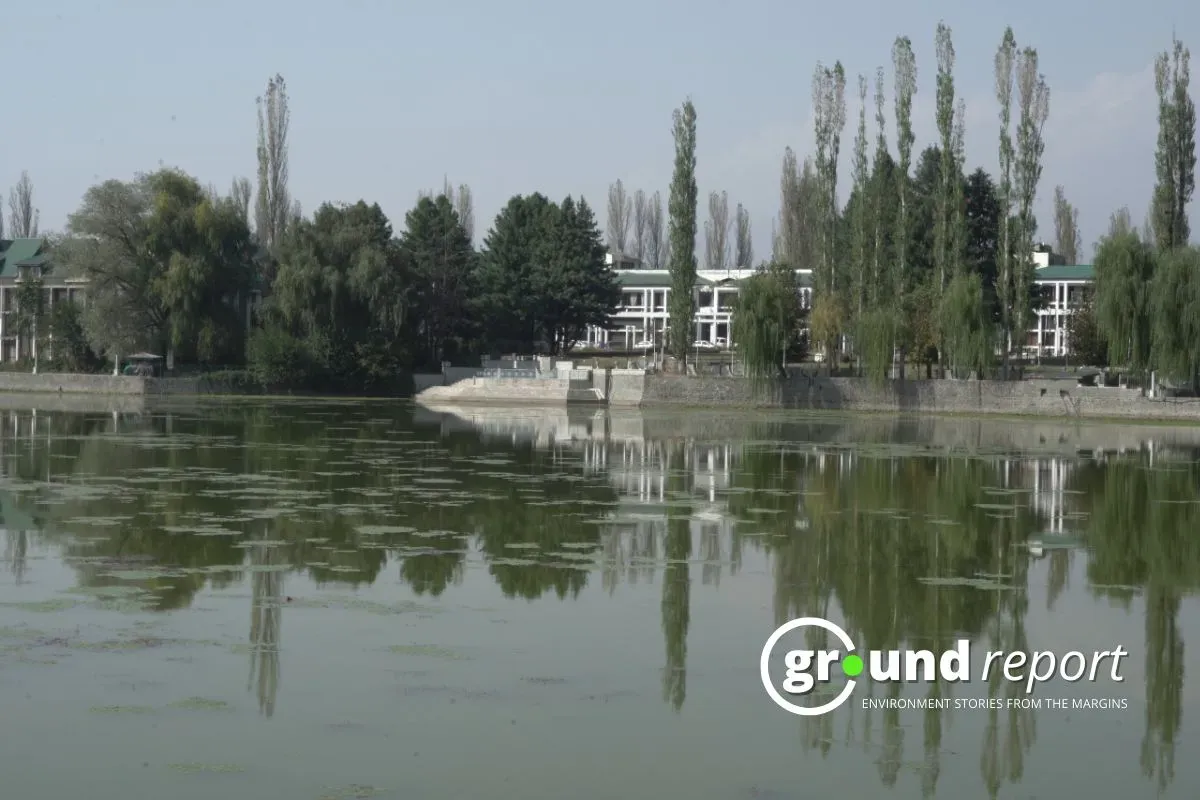
To address these risks, the report recommends several long-term measures. Among these are the construction of alternative flood channels to increase the region’s capacity to manage excess water, as well as significant improvements to urban drainage systems. The report also stresses the importance of restoring natural drainage pathways and wetlands, as they play a crucial role in absorbing and redirecting floodwaters.
Preparation for Future Floods in Srinagar
An official from the Flood and Control and Irrigation Department told Ground Report on grounds of anonymity that flood is a natural calamity and should never be underestimated. They added the department is taking all necessary precautions to minimize the damage it can cause.
“The Department of Irrigation and Flood Control are working diligently in constructing a flood channel that will be able to hold 60,000 cusecs of water and it will take almost two years to get constructed,” he added.
Additionally, the official assured that there is no need to worry because the channel can hold up to 40,000 cusecs of flood water. To put it in perspective, he mentioned that since the devastating floods of 2014, Srinagar has faced 20 instances of flood-like conditions where the gauge exceeded 40,000 cusecs. Yet, each time, the situation was managed without significant damage.
Support us to keep independent environmental journalism alive in India.
Keep Reading
Part 1: Cloudburst in Ganderbal’s Padabal village & unfulfilled promises
Deadly landslide devastates Wayanad in Kerala, death toll rises to 70
India braces for intense 2024 monsoon amid recent deadly weather trends
Follow Ground Report on X, Instagram and Facebook for environmental and underreported stories from the margins. Give us feedback on our email id greport2018@gmail.com.
Don’t forget to Subscribe to our weekly newsletter, Join our community on WhatsApp, and Follow our YouTube Channel for video stories.

